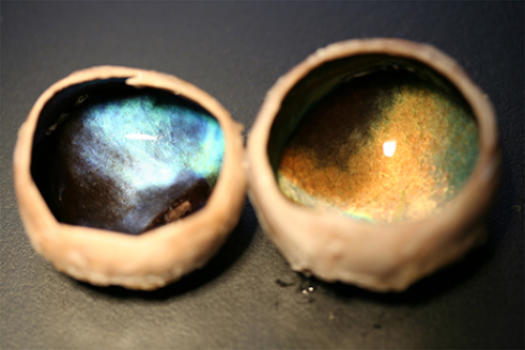Science News
Reindeer Eyes
November 27, 2013

By Jami Smith
Today, the Academy opens ’Tis the Season for Science. This year’s holiday exhibit and programming focuses on reindeer and how these animals are adapted to live in the Arctic—through features like their hair, antlers and feet.
Recent research demonstrates that reindeers’ eyes are also adapted for the harsh Arctic conditions. While you may put on sunglasses (or night-vision goggles) to improve your vision for changes in the light outside, reindeer don’t have that option. Instead, they change their eye color!
Researchers discovered that the eyes of Arctic reindeer change from gold in summer to blue in winter, which helps them adapt to the extreme lighting changes in their environment. Animals living above the Arctic Circle experience extended periods of permanent light in the summer, followed by near-complete darkness in the winter. Even though the lights are out in winter months, the Arctic animals still have to eat and protect themselves from predators.
Like many mammals, reindeer have a light-reflecting layer of tissue in their eyes, called tapetum lucidum (or “TL” for short). But unlike almost any other mammal, reindeer’s TL can adjust with a change in pressure. In the winter, when it’s dark out, reindeer pupils are constantly dilated, which increases fluid pressure in the eye. The pressure causes the TL to adjust, changing the light-reflectivity and color of the eye. This allows the animal to see more in low light, but with less detail.
In fact, the eye-color change that takes place in winter makes the eyes “between 100 to 1,000 times more light-sensitive,” according to ScienceShot.
“This is the first time a color change of this kind has been shown in mammals,” says lead researcher Glen Jeffery, of University College London. “By changing the color of the TL in the eye, reindeer have flexibility to cope better with the extreme differences between light levels in their habitat between seasons. This gives them an advantage when it comes to spotting predators, which could save their lives.”
Jami Smith is a science geek-wannabe and volunteers for Science Today.
Image: Glen Jeffery